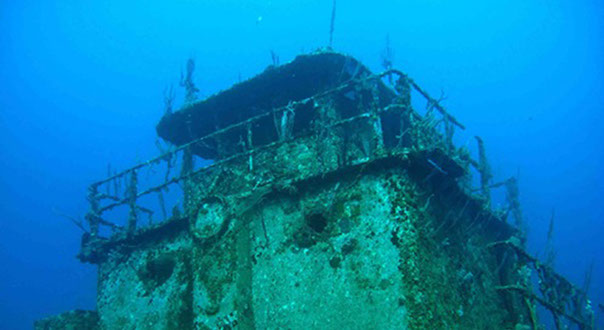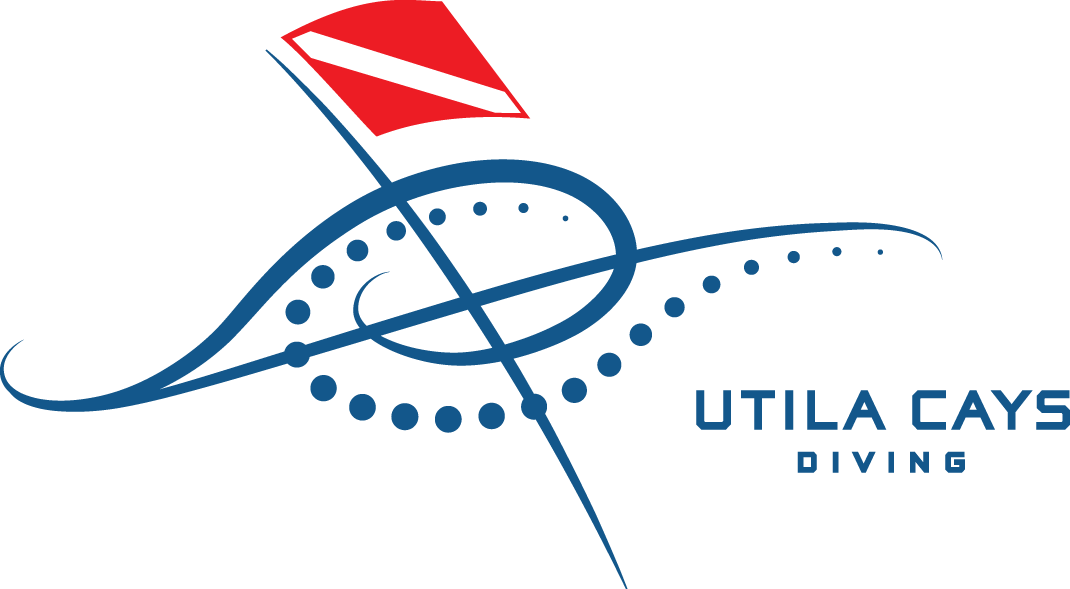OUR DIVE SITES
One of the many things that set us apart from other operators in Utila and the Bay Islands is that we visit the best dive sites on the North Side of the island. The corals here are pristine and in much better condition than near Utila Town. Guests who are fun-diving get to choose which sites they want to dive EVERY DAY!
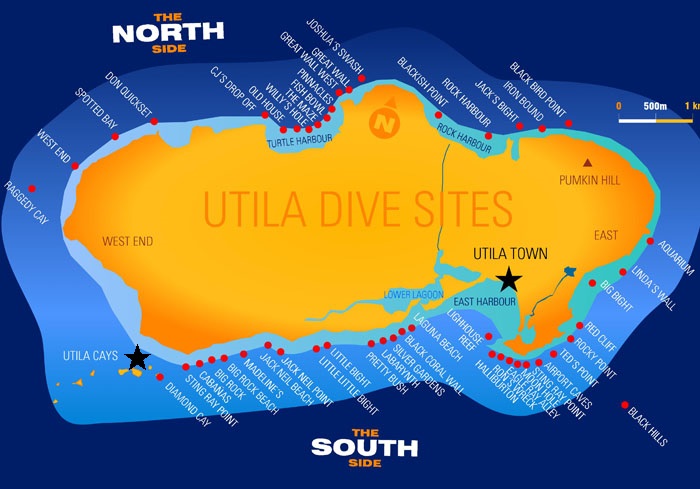
Duppy Waters
Duppy means “ghostly” in Patois, meaning that you never know what could be coming out of the blue, and it's easily UCD's favorite dive site in all of Utila. At the edge of Turtle Harbor Marine Reserve, Duppy Waters probably has the most abundance and diversity of marine life around the island. An impressive wall dive where the reef drops out of sight, with huge giant barrel sponges (some bigger than 6ft). On either side of the two buoys, there are sand patches to guide you back to the boat at the end of your dive. Keep an eye out for Spotted Eagle Rays cruising by, and in the shallows, you might see the resident Nurse Shark if you look underneath the overhangs.
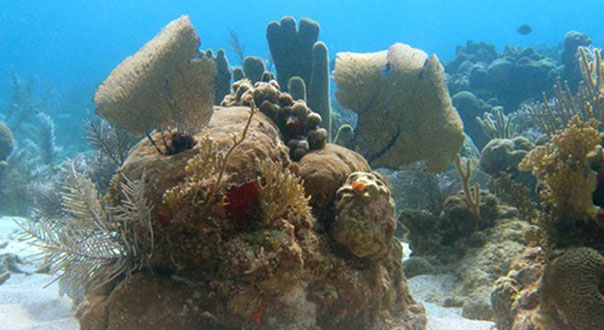
Pinnacle
Aside from the formation that has given the dive site its name, this is a great place for those with the Deep Diver Specialty to explore an incredible swim through that starts around 70 ft and ends close to 130ft. Visibility is often so good that you could see all the way to the surface from that depth! The Pinnacle itself (west of the buoy) rises from 100ft to about 30-40 ft in the shallows, where huge schools of snappers and even the illusive Midnight Parrotfish may make an appearance. Before your safety stop, you can circle the pinnacle a few times and look for Spiny Caribbean Lobsters and Banded Coral Shrimps in its crevasses.
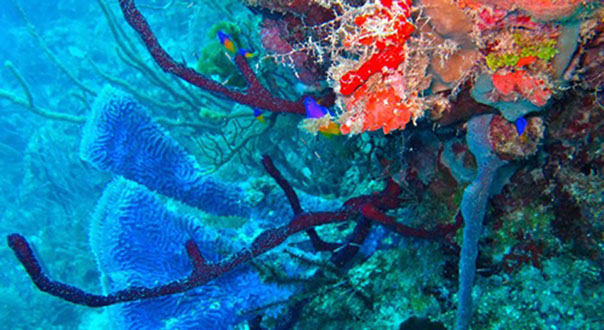
The Maze
Perfect for both beginners and those wanting to do the Deep Adventure dive, this site has a huge sand patch starting at 70ft, gradually sloping to 100 ft and beyond. Southern Stingrays can often be seen feeding in the sand, and the resident Queen Triggerfish might come for a close look and a taste of the eggs that we use during our AOW training. Once you start making your way up you will find “Willy's Hole”, a nice cavern around 70ft west of the sand patch that makes for a perfect photo opportunity from inside looking out into the blue. Look for schools of Glassy Sweepers or the resident Green Moray Eel in the dark corners of the cave. Your safety stop can be spent zig-zagging through several channels that give the dive site its name. Don't worry, you cannot get lost in the maze as our dive boat is right above it, waiting for your return.
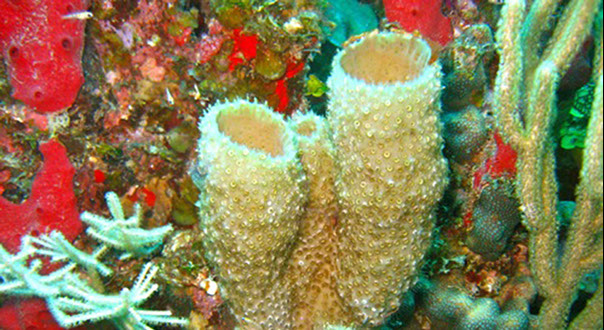
CJ's Drop Off
At the west end of Turtle Harbor, this is another dive site with drop off walls into the “abyss”. We always caution our divers to make sure they hold on to their camera, as if it's negatively buoyant and you let of go it, you won't have a way to retrieve it! As much as you'll be exploring the wall, keep an eye out into the blue for Spotted Eagle Rays swimming by. Bigger schools of fish await you in the shallows, and a few minutes west of the dive buoy, there is a narrow channel at 40 ft, where you should check to see if there's a nurse shark sleeping during the day. While on your safety stop in the small sand patch underneath the buoy, check out the impressive Elkhorn Coral formations.
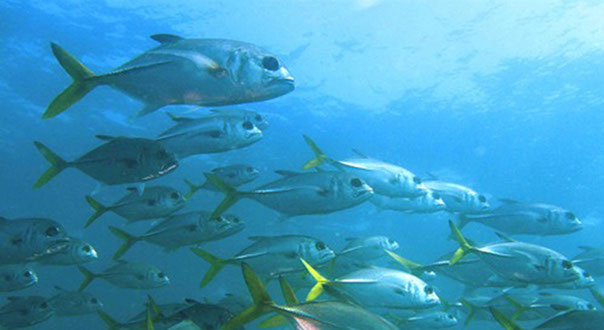 .
.
Don Quickset
Originally named “Don Quixote” after the legendary Spanish novel, the bay that shares the same name as the dive site was changed to “Don Quickset” when the english speaking settlers came to Utila. A relatively shallower site compared to the walls in Turtle Harbor, maximum depth can be reached around 75-80 feet. The topography of this site makes it unique around Utila - whichever direction you head from there, you will discover plenty of swim-throughs and channels. This was also the spot where the first Lionfish was spotted in Utila, so we'll bring along our Hawaiian slings and tell you about our efforts to curb their population explosion. Nurse Sharks can be observed either sleeping in the crevices or coming in for a closer look if there's a speared Lionfish around, and Great Barracudas might accompany you for part of the dive.
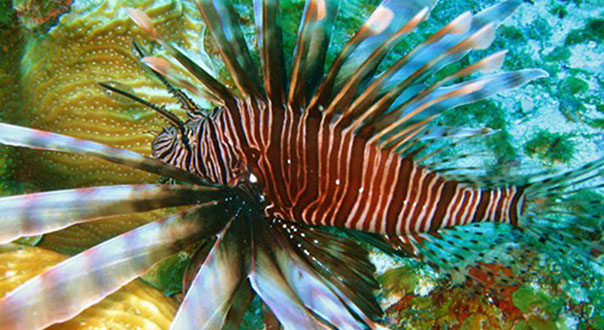
Spotted Bay
A very popular site, no matter what your certification level is! Shallow sand patches right underneath the boat are perfect for conducting skills for training dives, while for the more advanced, the wall drops off to about 90ft or so then a second, deeper sand patch slowly slopes down from there. A number of sand channels running perpendicular to the wall can guide you out into the deeper areas of Spotted Bay. This 'spotted' site is home to a lot of 'spotted' creatures: Spotted Eagle Rays, Spotted Moray Eels, Spotted Drumfish, maybe you could even find the illusive Spotted Scorpion Fish. Coming back towards the boat, make sure you check out the channels and small caverns underneath the boat, as there is a family of Nurse Sharks that made this place their home (we even spotted a juvenile Nurse Shark on one of our dives).
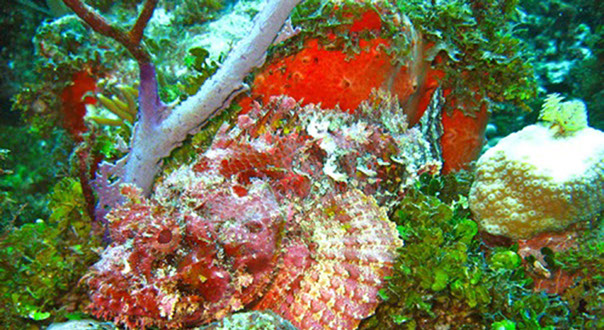
West End
Lots of sand patches in the shallows make this the perfect site to practice your navigation skills. Heading out a little bit deeper, you'll encounter the wall that drops down as a more gentle slope to about 100 – 130 ft. Keep a lookout for Scrawled and White Spotted File Fish, Green Moray Eels (some of which you might see free swimming around the reef), and right underneath the buoy have a look around for the resident Nurse Sharks that call West End their home. Big Tarpons and Hawksbill Turtles have also been reported around this area.
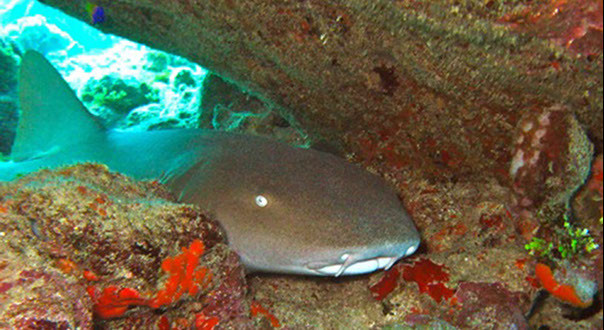
Paraiso
One of the attractions of this site is the resident school of Atlantic Spadefish (one of only two sites around Utila where you can see these great creatures). They are mainly found in schools of 15-20 of them, and from a distance they create the illusion of a much bigger fish. Once you approach them, they are not very shy, so you will have a chance to get up close and personal with them, a great plus for the underwater photographer. Great Barracuda might tag along for the ride, curious to investigate the divers swimming along. If you head further into the shallows, you might encounter a few Nurse Sharks sleeping in the sand patches.
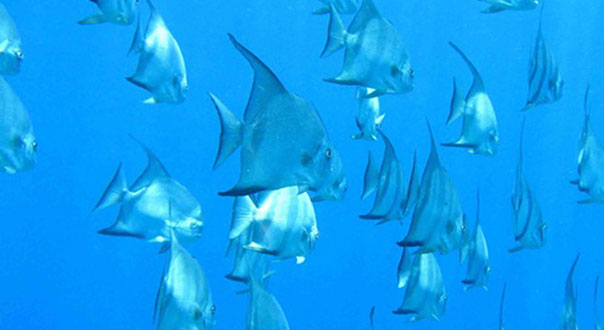
Raggedy Cay
There are two buoys close to Raggedy Cay, the northern-most of all the cays around Utila. Though it is a private island, it has been designated as a bird sanctuary and there are no people allowed on its shore. After all, we want the birds to stick around as they can help us spot the whale sharks when they cruise by the north side of Utila. Raggedy Cay and the reef west of it has been designated as another Marine Reserve Area, and this means a greater abundance of marine life can be observed here. A few resident Hawksbill Turtles can been seen feeding on sponges or just slowly swimming by, and beautiful Spotted Eagle Rays have been sighted cruising the outer wall. In the shallows there are several sand patches perfect for conducting skills or looking out for sand critters such as Yellow Jawfish and Peacock Flounders
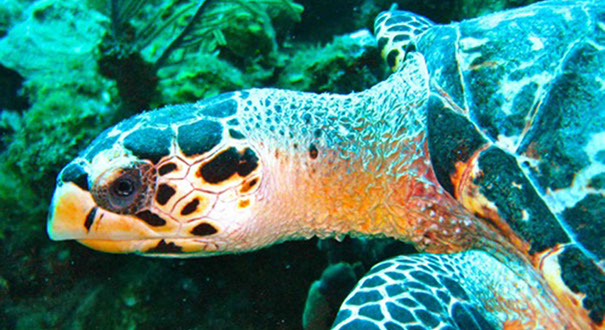
Diamond Cay
Named after the small, uninhabited island in the background, this dive site stands apart from most around Utila as it is a seamound reaching up to about 15ft from the bottom of the ocean. There is a wide sand patch at about 30ft where you have a good chance of encountering the resident Gray Angelfish, who will quickly swim up to inspect the divers. Heading west, a narrow channel will lead you to the outer wall, where you can go in either direction depending on the current. Aside from the marine life, spend some time admiring the healthy colonies of Pillar Coral, Black Coral and the Black and White Crinoids. In the blue you might have a Spotted Eagle Ray swim by, while in the shallows Hawksbill Turtles often feed on the Sponge Corals. More experienced divers could choose to head south and do a drift dive that will end at Stingray Point.
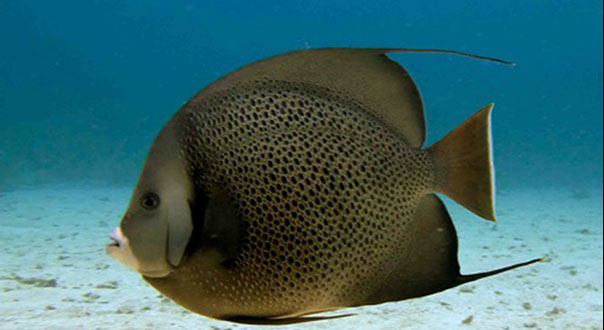
Stingray Point
This site has some of the healthiest corals around the island, and it is only a few minutes away from Utila Cays Diving's base on Jewel Cay. A huge shallow sand patch, populated by lots of Brown Garden Eels, gently slopes down, while on either side the reef wall continues on. We recommend going west from the buoy, where about half way into your dive you will come across a cool swim through starting at 60ft, gradually taking you up to 40ft. On your way back to the boat, have a look for the Black and White Crinoid and the Brown Featherstar Shrimp that shares a symbiotic relationship with it! While on your safety stop, you might encounter a Balloonfish, but he's pretty shy, so approach slowly to get a better look.
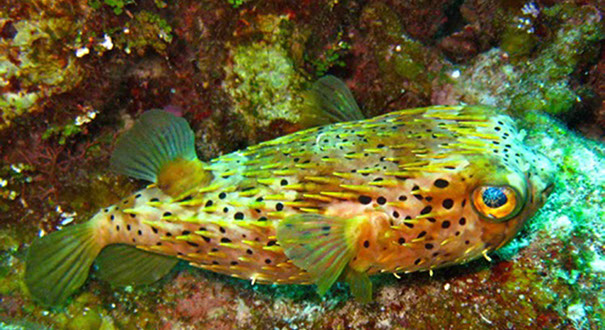
Big Rock
Named after the big rock formations on the beach, this is probably the most popular site on the south side of the island. Big Rock has a few resident seahorses, and our divers often request that we return here throughout the week. There is a reef wall, ending in a sand patch around 50ft, but a bit further away you can find a small pinnacle formation starting around 70ft. There you can often observe Yellow Jawfish (look closely you could see the fertilized eggs in their mouth), Peacock Flounder, Upside Down Jellyfish and other sand critters. Along the wall stop to observe the Black Coral extending out (a protected species in Honduras), and those with an eye for detail might spot the illusive neck crab, a master of camouflage.
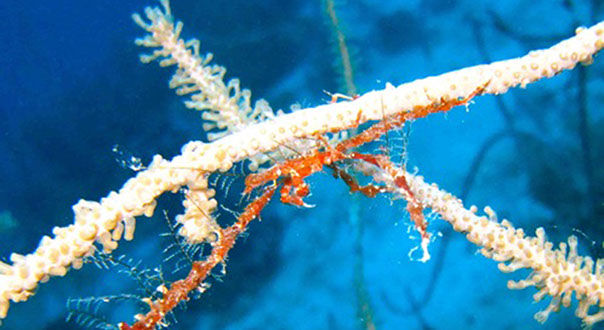
Jack Neil Beach
A small, protected cove on the south side of the island, this is a perfect site for beginners as well as those interested in macro life. In the wide, shallow sand patch you can search for Long Snout Seahorses, Giant Hermit Crabs, Brown Garden Eels and the rare and illusive Flying Gurnard and Short-nosed Batfish call this place home. On either side of the sand patch you can enjoy a nice, relaxing wall dive, with big schools of Gray Snappers and Creole Wrasses to keep you company. Don't forget to look up during your dive, you might discover the school of Caribbean Reef Squid hovering above you and changing colors.
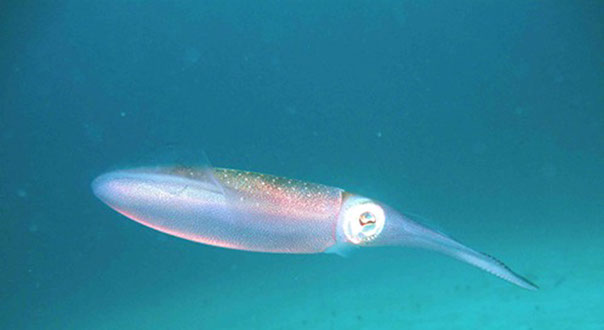
Little Bight
Another site perfect for beginners and more advanced divers alike – a huge sand patch extends on both sides of the buoy and all the way to the beach. Going either east or west, divers will encounter a reef wall, but perhaps the biggest attraction here are the sand dwellers; have a look for Upside Down Jellyfish, Brown Garden Eels and Giant Hermit Crabs. A few coral formations further in the deep provide a home for juvenile Angelfish and Queen Triggerfish, and it's not uncommon to see Spotted Eagle Rays cruising by or Southern Stingrays feeding in the sand. Save some time to explore the shallows at the end of your dive, keeping an eye out for Long Snout Seahorses.
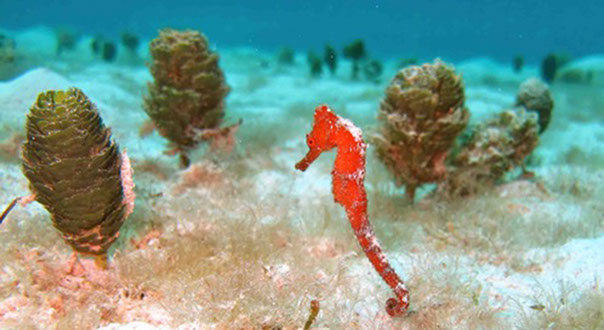
Black Coral Wall
A shallow plateau underneath the boat buoy leads out to this impressive wall dive – whether you head east or west, you will come across plentiful Black Coral formations (a protected species in Honduras). The drop off here ends around 90-100 ft followed by a gently sloping sand bottom. Explore the crevices for Great Barracudas and Dog Snappers, while those with a keen eye for macro life can spot juvenile Spotted Drumfish hiding in small holes. As you make your way back to the boat in the shallows, look for Long Snout Seahorses, including the bright orange one that is a delight to photograph. Between the buoy and the island there are several sand patches perfect for practicing your buoyancy skills.
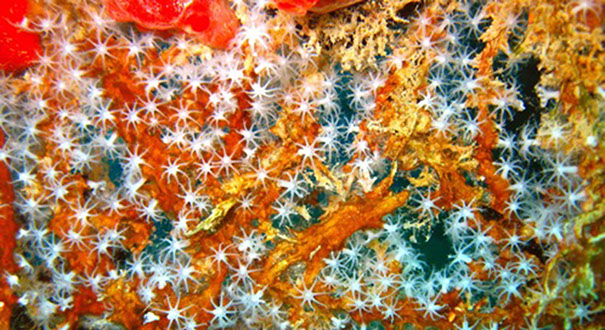
Halliburton 211
Utila's best wreck dive is a Halliburton cargo ship that used to run supplies to and from various oil platforms. Sunk on purpose in 1998, this was a project supported by all dive shops around the island to create an artificial reef and also a great wreck dive for either the Advanced Open Water Course or the Wreck Diving Specialty. The ship lies upright on a sand bottom right at 100ft, with the upper deck culminating around 65ft, making it a dive suited for the more experienced diver. Here you might encounter big Dog Snappers, Barracudas, Atlantic Thorny Oysters and a number of Bearded Fireworms. According to the tradition, “if you swam through here, you must pay a price, leave an offering to the sea, to make the Halliburton nice”, you will find a number of ever changing “attractions” left by other divers before you: bikes, phones, laptops, hats and even a toilet, providing for some unique photography opportunities. You can even swim through the wheelhouse and pretend you are the captain of the boat! Keep in mind there is no shallow reef at this dive site, so use one of the two buoy lines as a reference when performing your safety stop.
